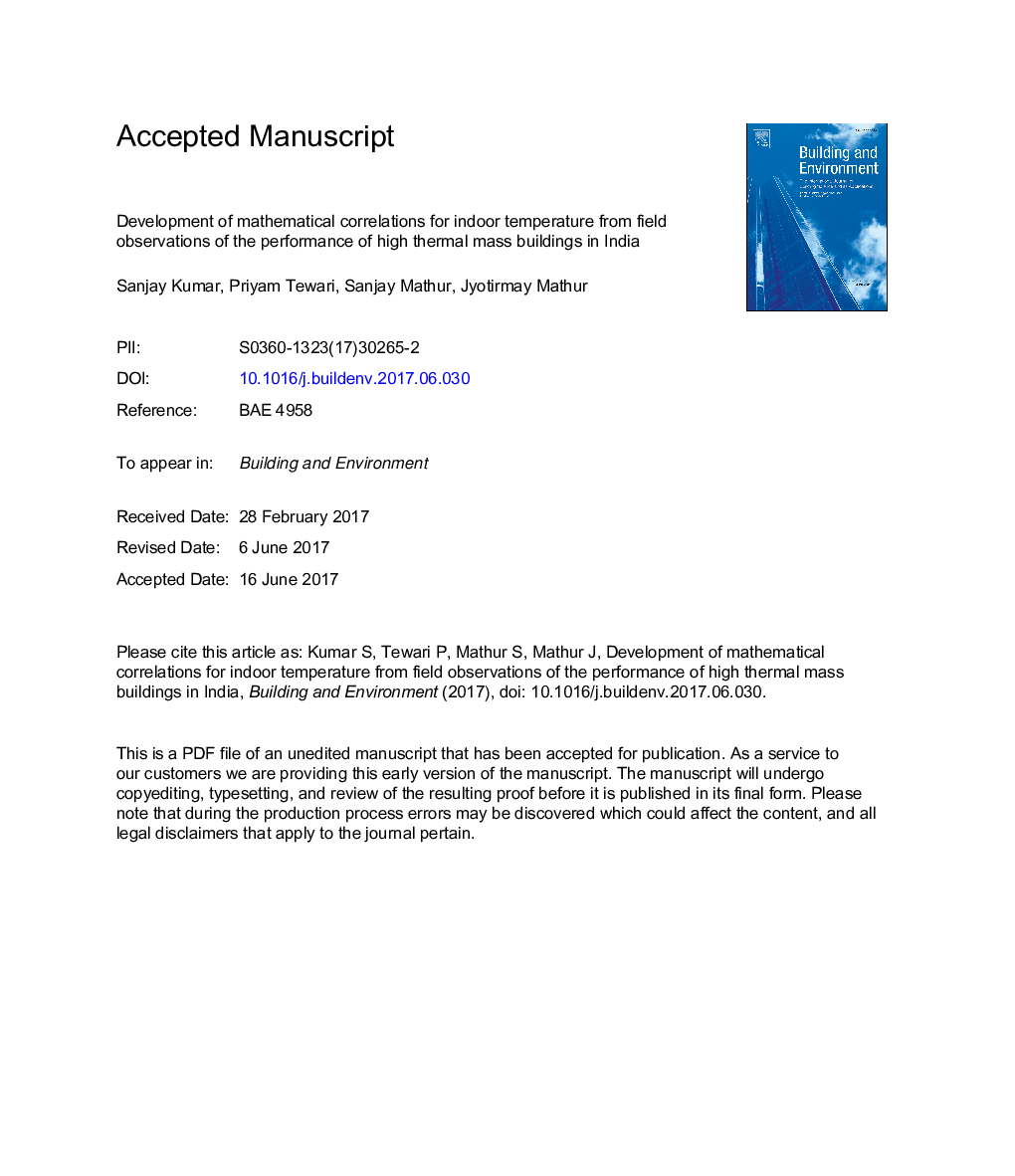| Article ID | Journal | Published Year | Pages | File Type |
|---|---|---|---|---|
| 4911470 | Building and Environment | 2017 | 42 Pages |
Abstract
Use of stone and brick wall as high thermal mass is a common strategy in residential and commercial buildings in a hot tropical country like India for thermal comfort and energy savings. In this paper, thermal monitoring of high thermal mass residential buildings is performed in the composite climate of India for the summer and winter season. Separate mathematical correlations are developed to predict the indoor temperatures, as the functionality of high mass buildings is different for the summer and winter season. Statistical significance of developed correlations is further analyzed and found good correlation coefficient with field measurement. Finally, based on the thermal performance of these high thermal mass monitored buildings to produce thermal comfort indoors, the bio-climatic boundary of ambient conditions for the use of high thermal mass in buildings is developed for one climatic zone of India. The new bio-climatic boundary extends up to an average monthly maximum ambient temperature of about 38.4 °C at 2 g/kg specific humidity and follows a tilted line up to 35 °C at 20 g/kg specific humidity for indoor thermal comfort in the composite climate of India. Also, the high mass comfort zone extends to a limit of 40.9 °C when the airspeed is up to 1 m/s using a ceiling fan.
Related Topics
Physical Sciences and Engineering
Energy
Renewable Energy, Sustainability and the Environment
Authors
Sanjay Kumar, Priyam Tewari, Sanjay Mathur, Jyotirmay Mathur,
